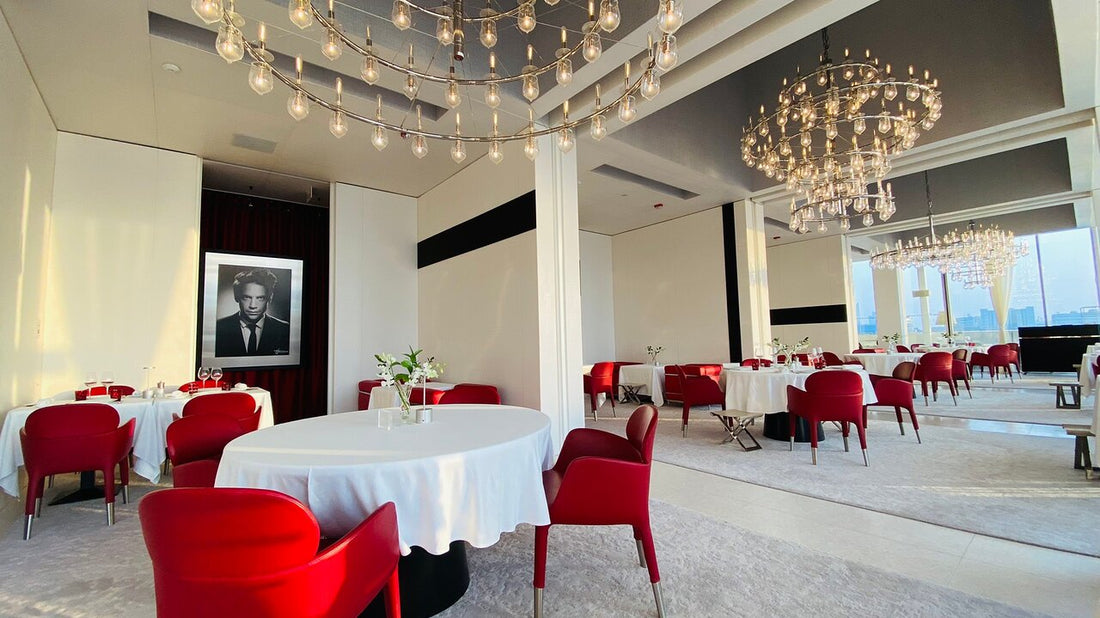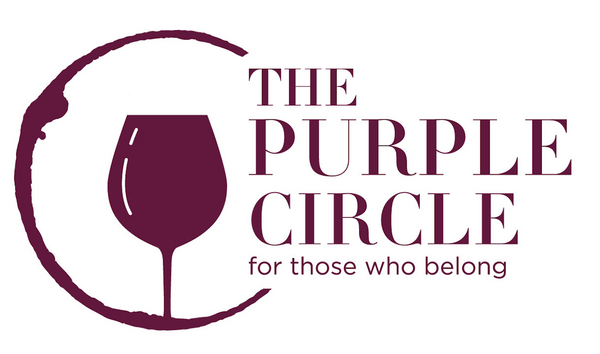
5 Wine Discoveries from Our First Event
Share
By Alisa, Sommelier & Co-founder of The Purple Circle
📍 Abu Dhabi | Fouquet’s Restaurant | Curated Wine Dinner Experience
First let me tell you about myself. My name is Alisa, I am a Sommelier and Co-founder of the Purple Circle wine club. After 12 years in customer service I’ve finally stepped into the world I’ve long dreamed of - where I can both learn and share the knowledge about wine. In this industry, we say a sommelier never truly arrives at a destination - this role is a lifelong journey. And it’s true - every single day brings something new to discover, taste, or even change mind about. When I was preparing for our very first event at the Fouquet’s restaurant, I came across some fascinating facts and made my own discoveries that I would love to share with you.

1️⃣ Chablis vs Petit Chablis – Not the Same!
The first starter we agreed on with talented chef Balveer was Scallops with a yuzu butter sauce, briny pike caviar and salmon roe. Sounds delicious, isn’t it? I straight away decided it would go well with Champagne or light crisp Chablis. Preparation for every event consists of two parts - theoretical research and practical trials (wine tastings and food pairing experiments - my favourite part of the job). We needed to compare Chablis and Petit Chablis side by side. These wines have distinct taste profiles due to differences in terroir. Chablis comes from vineyards with prime Kimmeridgian limestone soil, giving it a more complex minerality, green apple, lemon, and flint notes, often with a fuller body and aging potential. Petit Chablis, cultivated in higher, windier areas with younger limestone and sand, tends to be lighter, crisper, and more citrus-driven, with steely minerality and a fresh, bracing character. The difference was quite unexpected. Ultimately, I preferred Petit Chablis, as its bright, delicate profile enhanced the tender scallops. It was a perfect match!

2️⃣ Foie Gras with Riesling
The next dish on the menu was foie gras with spiced apple chutney and toasted brioche. Of all the pairings, this one took the most time to perfect. The classical choice for foie gras would be Sauternes, but serving a sweet wine at this stage in the meal would make it difficult to transition back to dry wines. I decided to explore other options and considered Vouvray, Gewürztraminer and Riesling. Let me share with you one secret - riesling is the most versatile white wine in the world, it pairs well with fish, seafood, white meat, veal, vegetables, cream, cheese, oriental and asian dishes, spicy, sweet and savory – it’s truly a universal companion. On top of that, I have yet to meet anyone who doesn’t like Riesling. For foie gras, the key is a dry yet highly aromatic and fruity Riesling, ensuring balance between richness and freshness.

3️⃣ Burgundy’s newest appellation
We decided to pair roasted veal fillet with asparagus, young leeks, and plum jus with an elegant Burgundy. While reviewing Burgundy’s wine list, I discovered that Coteaux Bourguignons is its newest appellation, introduced in 2011. This change came after Côte d'Or producers objected to Gamay from Beaujolais being sold under the Bourgogne AOC, fearing it lowered Burgundy’s reputation. As a compromise, Beaujolais wines were placed under the new Coteaux Bourguignons label instead of the lower-tier Bourgogne Ordinaire. Though the appellation covers all of Burgundy, most of its red wines are likely to be Gamay from Beaujolais, blend with Pinot Noir. Coteaux Bourguignons Rouge by Louis Jadot has intense aromas of strawberries, cherries, rose petals, cranberry jam, earthy undertones and refreshing acidity.
4️⃣ “If they grow together, they go together” is not an axiom!
Every sommelier knows this rule - it’s also called regional or terroir-based pairing. The idea is that wines and local cuisine evolve together over time, creating natural harmony in flavours. A classic example is Sancerre with Crottin de Chavignol or Barolo with truffle-infused dishes from Piedmont. When we moved on to Boeuf Bourguignon, my business partner Alexis pointed out that it traditionally pairs with Burgundy wines. However, after slow cooking the beef for over six hours, the result was unbelievably tender, juicy, and subtly sweet. At that point, the only two wines I could envision pairing with it were Saint-Émilion and Pomerol - and I think everyone enjoyed that decision!

5️⃣ Banyuls
This wine was my greatest discovery! Alexis once told me that I underestimate wines from the South of France and he was right. With Champagne, Loire, Bordeaux, and Burgundy commanding so much attention, I rarely focus on the wines of Languedoc-Roussillon. So let's give credit to my business partner for this exceptional epilogue to the evening. He suggested pairing Opera cake with Banyuls. Initially, I wanted to include Sauternes, the king of dessert wines, but at the same time, I fully trusted Alexis. The first sip of Banyuls completely changed my perception of the entire region. It’s a fortified dessert wine that is rich in flavour yet not overly sweet. The fruitiness of ripe black berries lingered over the creamy and chocolate layers, leaving a silky finish of dried fig, ganache, and almond. A decadent pairing - a harmony of dark, layered sweetness and aged complexity, velvety as a curtain in the opera house.

From the crisp minerality of Petit Chablis with scallops to the unexpected decadence of Banyuls and Opera cake, each pairing was a journey through tradition, innovation, and sensory delight. Ultimately, wine pairing is both an art and a science - grounded in theory yet guided by intuition, experimentation, and a touch of serendipity. As we continue exploring new horizons, one thing remains certain: the best pairings aren’t just about tradition or rules but about creating unforgettable experiences.
❤️ Let’s Keep Exploring Together
Follow The Purple Circle for upcoming dinners, wine insights, and unforgettable experiences.
